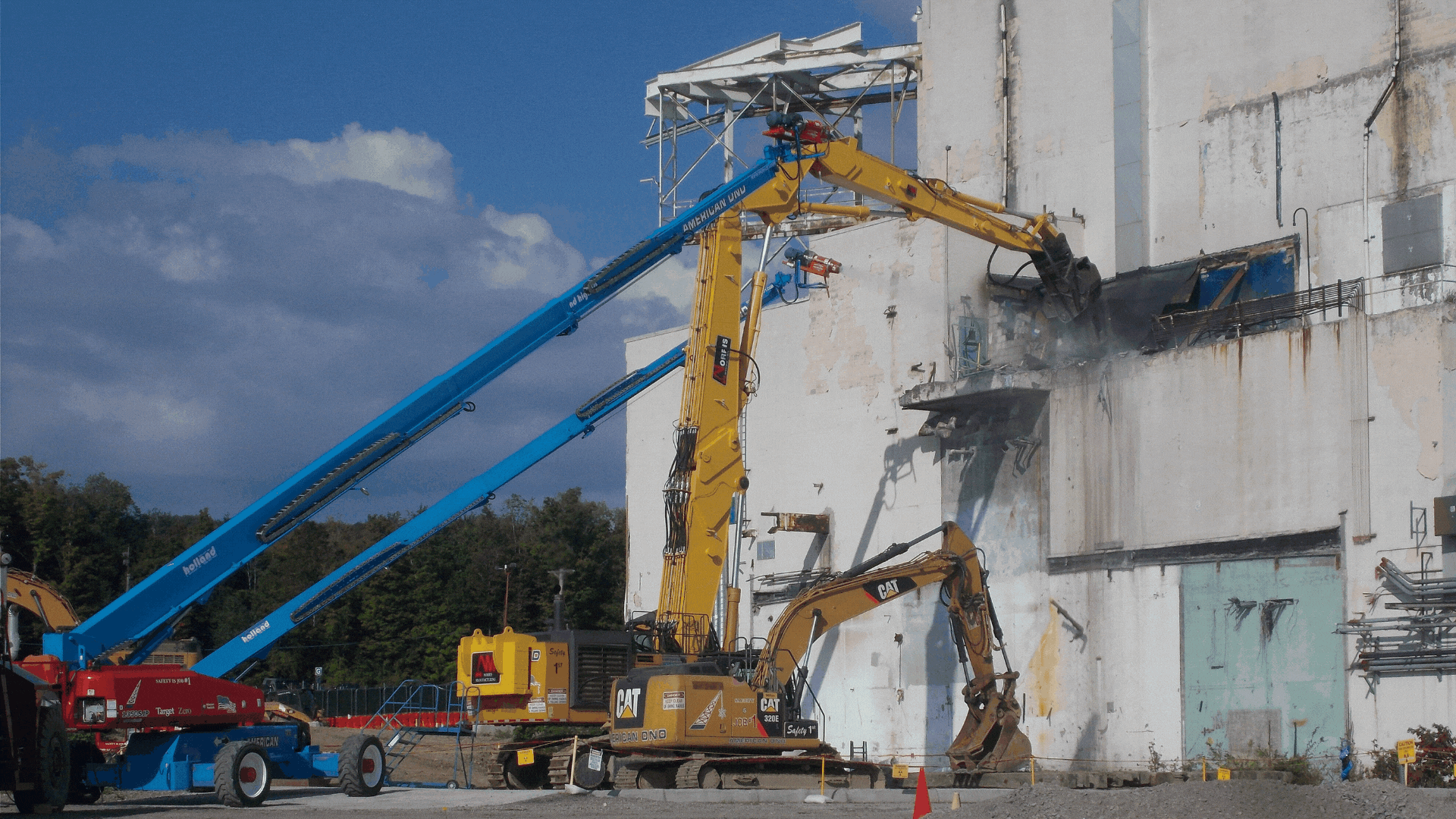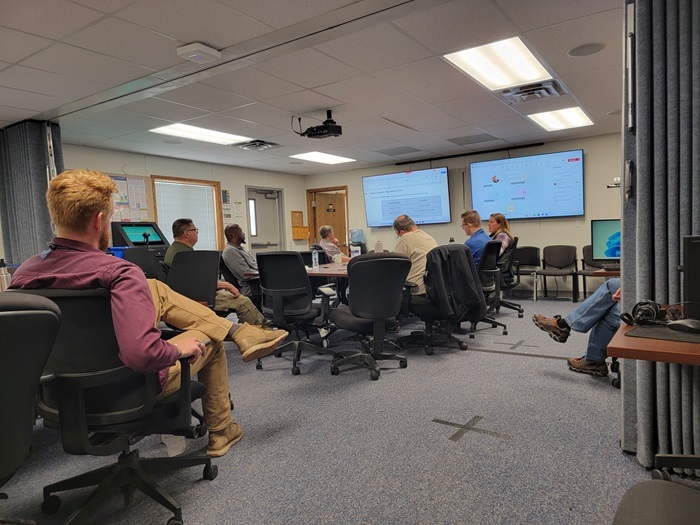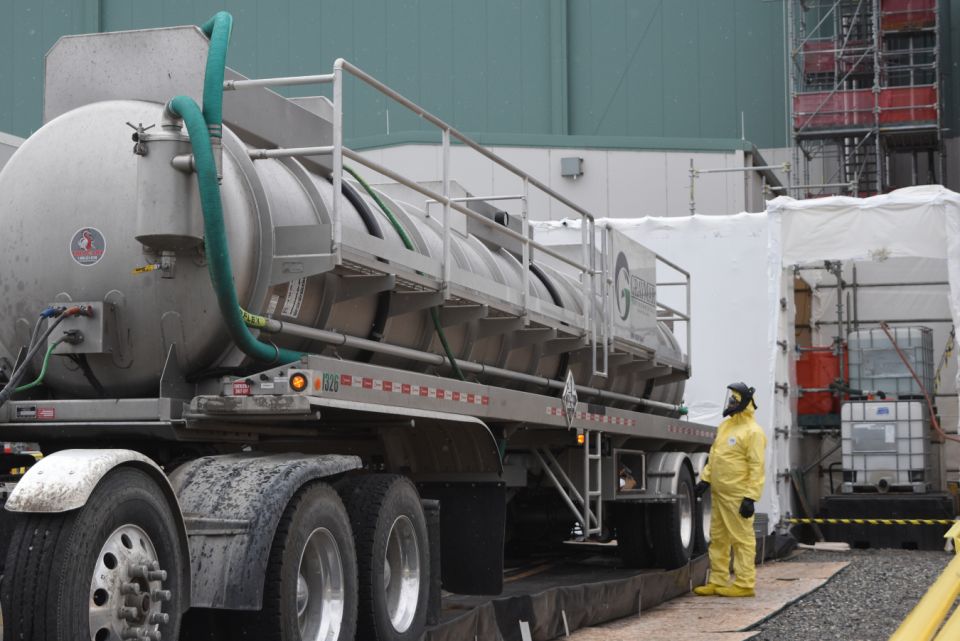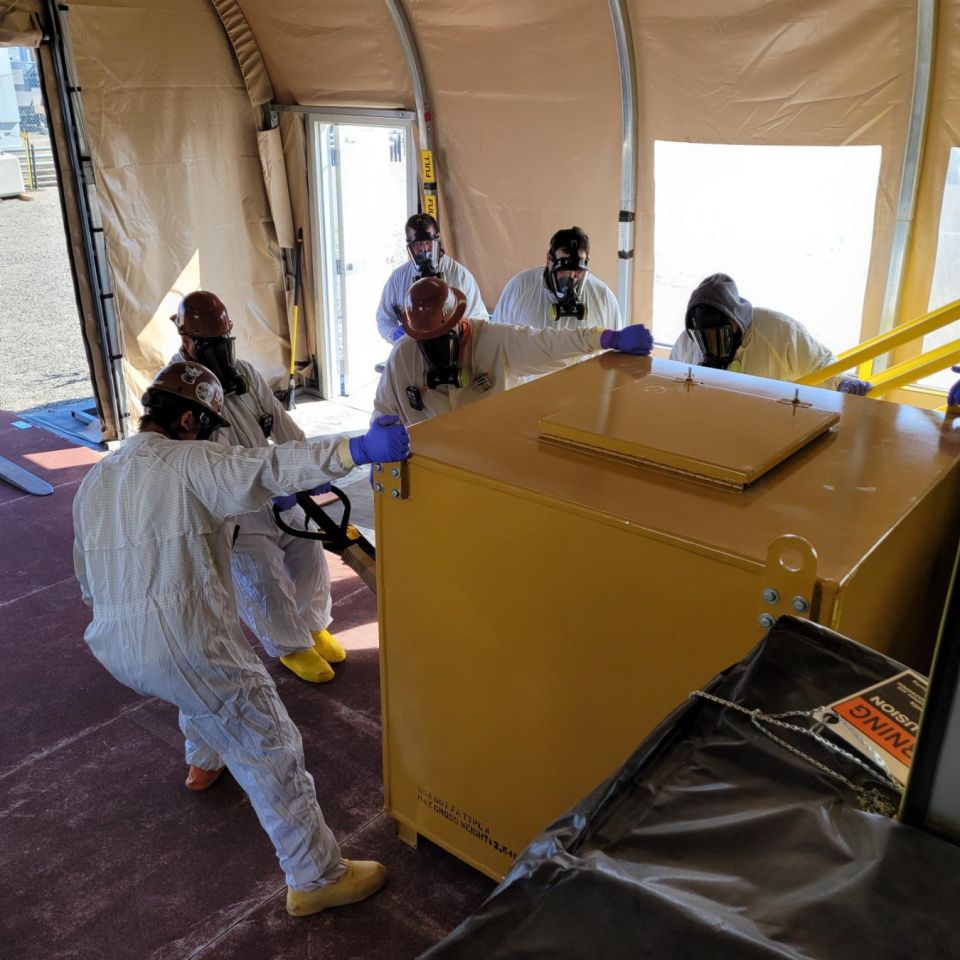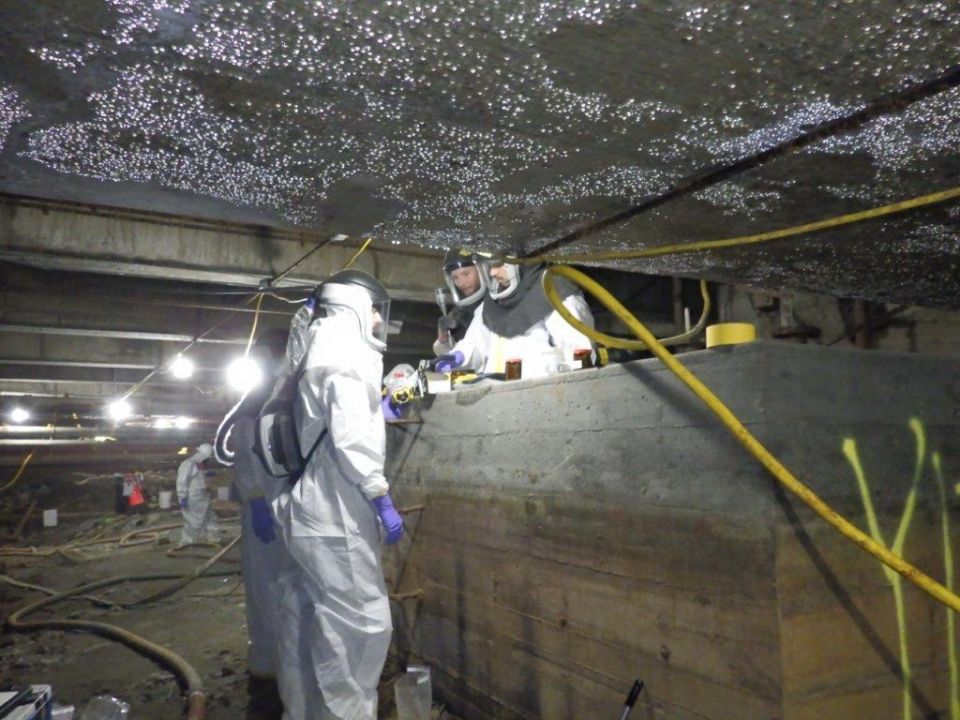Former West Valley fuel reprocessing cell dismantled
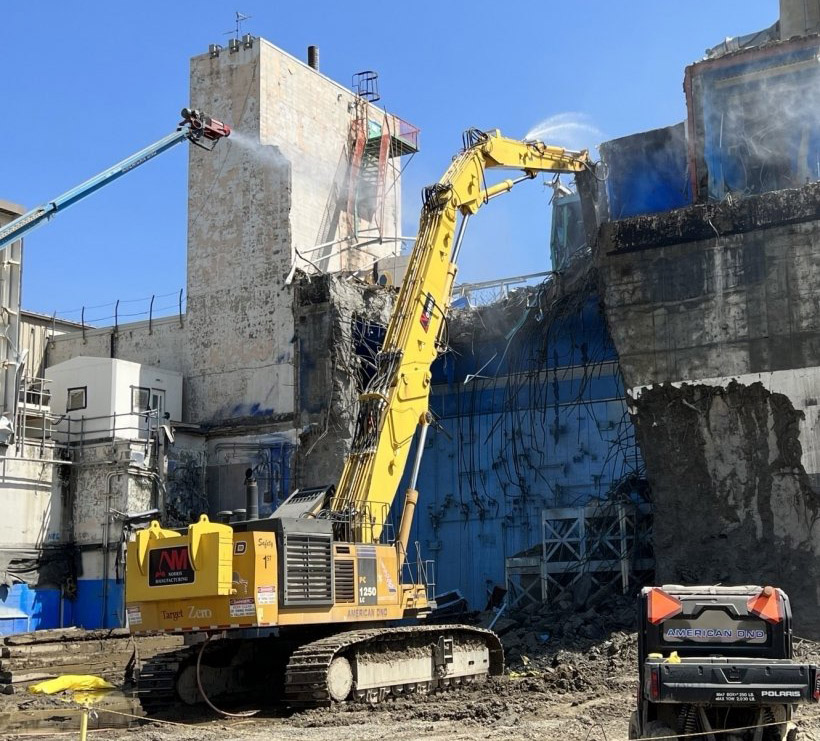
An excavator with a hydraulic hammer is used to dismantle the chemical process cell, as part of the deconstruction of the main plant process building at DOE-EM’s West Valley Demonstration Project. (Photo: DOE)
Work crews are currently dismantling the chemical process cell at the West Valley Demonstration Project in New York, with work expected to be completed over several months, the Department of Energy’s Office of Environmental Management noted late last month. Demolition of the cell, part of West Valley’s main plant processing building, includes the removal of racks used decades ago to store high-level radioactive waste canisters.
According to DOE-EM, a 2023 priority is to dispose of 9,000 tons of demolition waste from the processing building, one of the site’s last remaining major facilities. The demolition is expected to take about 30 months to complete.
The work: Earlier this year, work crews used a heavy-duty excavator with a hydraulic hammer to take out the outermost 3 feet of the cell’s 5-foot-thick reinforced-concrete walls. This lower-risk work allowed workers with CH2M HILL BWXT West Valley, DOE-EM's contractor for the project, to perform other deconstruction activities in parallel, which helped to accelerate the project’s schedule and lower cost, according to DOE-EM.



